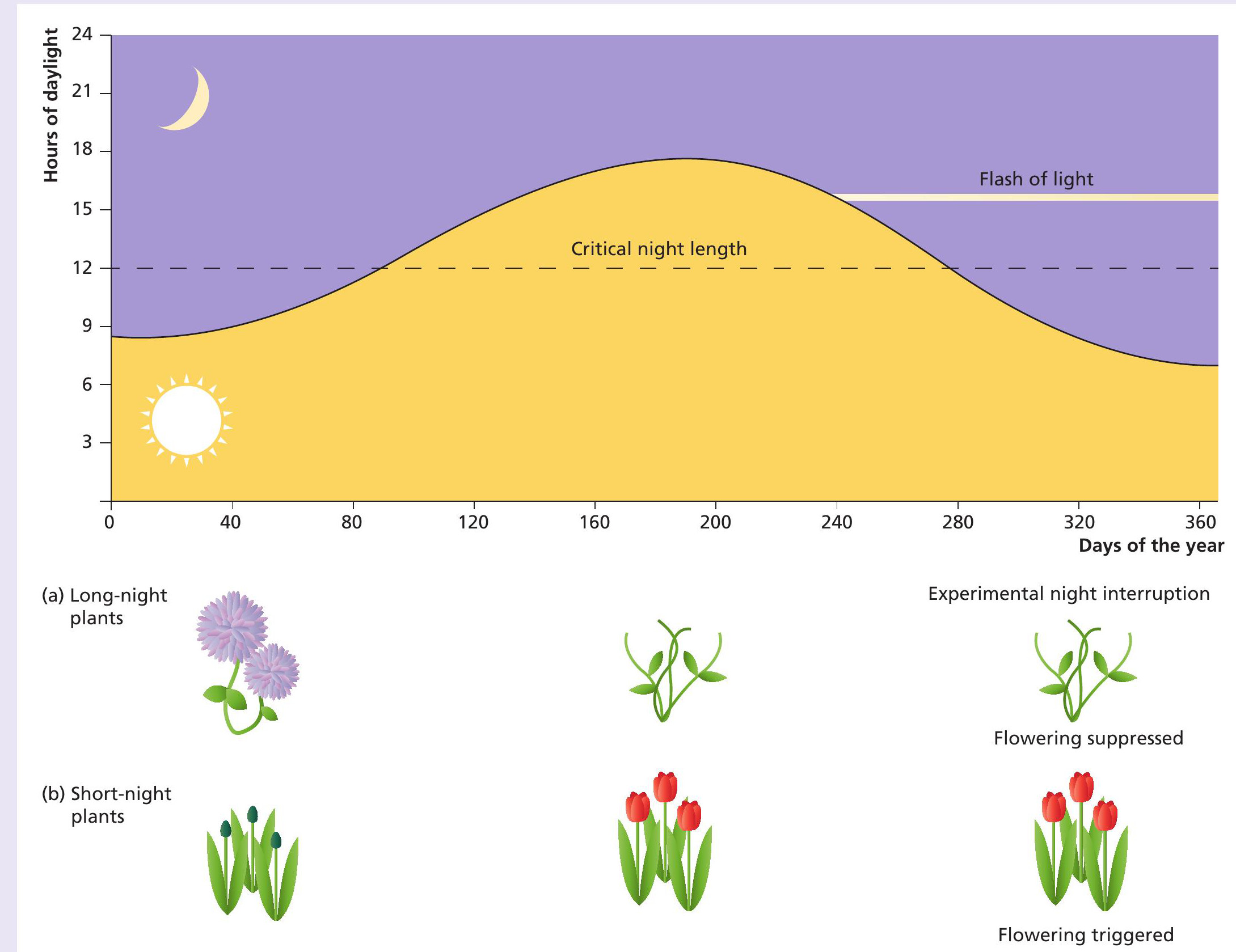
Both plants and animals adjust their behaviour and physiology to light/ dark conditions in their environment. The photoperiod is the interval during which it is light. Plants including crocuses and tulips open their flowers during the day, when their pollinators are out and about, but close them at night. Some also erect their leaves during the day, allowing them to harvest sunlight efficiently, and drop them at night. These daily rhythms are called circadian rhythms and they are triggered by environmental cues that correspond with the period of the Earth’s rotation: 24 hours (circa means approximately and dies means day).
The Earth’s photoperiod changes throughout the year in temperate regions, giving different seasons and changing day lengths. Some plants adapt their annual rhythm of flowering accordingly. Some are stimulated to flower by short nights, others by long nights (see Figure 1). For example, tulips flower in the spring when the nights are getting shorter, whereas chrysanthemums flower in the autumn, when the nights get longer.
Your organisation does not have access to this article.
Sign up today to give your students the edge they need to achieve their best grades with subject expertise
Subscribe




